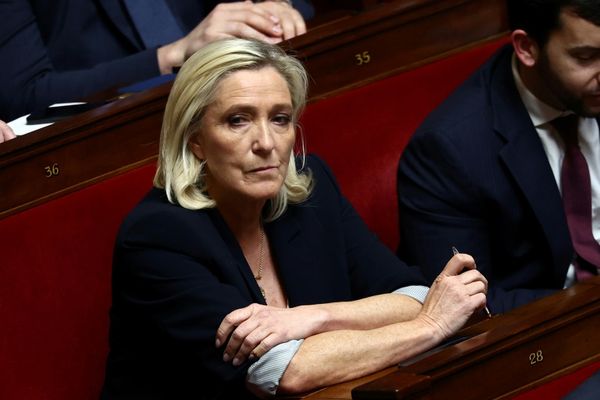The Sidney Myer Creative Fellowships are not as well known as other arts grants or awards, which is peculiar, because they are incredibly lucrative.
Artists and practitioners who are awarded the fellowship are given $160,000 to spend over two years, with the only caveat being that they spend most of those two years practising in Australia.
The fellows are selected on two criteria, outstanding talent and exceptional courage, and the money is not tied to any specific outcome.
Effectively, they're given free cash.
This year marks a decade of the fellowships, which have seen 100 artists receive $16 million between them — no small feat of philanthropy.
It's an unusual model, giving out money to artists in the hope they'll continue to produce great work, but director of the Sidney Myer Fund, Andrew Myer, says it's successful.
"There are so many programs that are dedicated to justifications," he tells ABC RN's AWAYE!.
"When we created these awards, we determined that it would be better to allow artists to make choices around their own art and life, as grown-ups.
"It sounds cliché, but when you're onto a good thing, you stick to it."
Embracing diverse talent
And onto a good thing, they are.
Past recipients include Merindah Donnelly, SJ Norman, Jonathan Jones, Alexis Wright, Ellen Van Neervan, Eric Avery and Vernon Ah Kee, to name a few.
Not only are they respected artists, but they are all Indigenous.
This year, five of the 10 recipients are First Nations: Alethea Beetson, Fred Leone, Carly Sheppard, Ghenoa Gela and Vincent Namatjira.
Myer says that while there is certainly significant interest around the fellowships within the Indigenous arts community, the frequency of Indigenous winners speaks to a broader cultural shift.
"Indigenous practitioners [are] utterly dedicated to their work, and [are] often not recognised for their outstanding output," he says.
"[Recently] there has been more and more recognition of the absolutely extraordinary calibre of Indigenous artists in all art forms."
Beetson, who was awarded the fellowship for cultural leadership, has her own take on why so many First Nations people take away these awards.
"[As an Indigenous creative] you do get to tap into a richness and a vibrancy, something that is much more timeless than perhaps some of the other arts methodologies and frameworks you could use," she says.
"We're so deadly … Mob are excellent — we make the best art on this continent."
Making 'bigger and better' work
Working out of the remote Aboriginal community of Indulkana in South Australia, Vincent Namatjira believes remote living shouldn't be a barrier to success.
He says the fellowship money will allow him to keep working in remote Australia, and will offer an opportunity to be "explosive, bigger and better".
Over the next two years, he wants to be more experimental with his art, do more residencies and have more overseas exhibitions.
He plans to spend his time between the remote communities of Indulkana and Hermannsburg while he works.
Brisbane-based Beetson says the money will allow her to "think more critically about the work that I'll accept into the future".
She'll also be investing her money into BlakSocial, an arts management business she created.
In time, she wants it to become "self-sustaining for community, and potentially even grow to a point where it invests back in the ethical models that I know lots of mob are developing".
For dancer and choreographer Carly Sheppard, the fellowship money offers something simple: security.
She says it will change the lives of her and her son, allowing her to start projects she had to "put on the shelf in exchange for the roof over our heads".
"I'm excited," she says.
"I feel like I'm about to be shot out of a cannon."
'A blink of liberation'
For Butchulla songman Fred Leone, his winnings will be split into three music projects, two sung completely in Butchulla language, and the third a contemporary soul album that focuses on Black deaths in custody.
He says the money has given him "the ability to concentrate on the more important things, and to have more time to do that".
Ghenoa Gela, who was awarded for storytelling, dance and theatre, will spend next year touring her show, My Urrwai, internationally.
"It means that as a blackfella and specifically a Black woman who's constantly navigating various difficult, sometimes horrendous spaces … I will actually experience a blink of liberation," she says.
"And I will proudly take this blink of a moment and celebrate the heck out of it."
For some, the fellowship money will help them recover from the effects of COVID-19 on the art community.
Namatjira says his art was integral to his wellbeing during the pandemic.
"It was difficult for me as an artist, but when I was actually painting … it was like the pandemic never existed," the Archibald-winning artist says.
"That's what kept me going, I was just painting, painting, painting."
"You can feel it out there, you can see it in the major spaces, the negative impact this pandemic has had," Beetson says.
Her winnings will offer her space and time to create.
"It feels like there's a breath you can take, that you haven't been able to take in a really long time."
RN in your inbox
Get more stories that go beyond the news cycle with our weekly newsletter.







